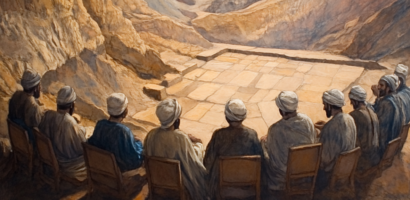For those of you who are just joining in. Our study group began a new initiative. We started reading books together and discussing them online.
Please, secure your copy and begin reading the book. (I found a downloadable free copy here and a hard copy here.) I also suggest that you read the discussions about the first chapter as well. To do so click here. Please, read the chapter first and resist the temptation to simply comment on the quotes I provide here. So, here we go:
On pages 22-23 we read: “David draws up the plans, then, but Solomon, David’s son and heir, the wisest of men, is the king chosen to complete the building of the Temple. It is to be a ‘House for the Name of the Lord God’. This is a phrase worth pondering. In the ancient Mediterranean, from our earliest records to the Roman Empire and beyond, there were innumerable temples and holy shrines, from small piles of rocks on mountain tops to the Parthenon in Athens, and there were many similarities in ancient religions from region to region.Temples normally contained an image of the divinity (which was usually anthropomorphic, though certainly not always so), and sacrifices were offered to the god at the temple. Monumental temples were both expressions of a community’s religion and a statement of the community’s power and status. A temple was an easily recognizable feature of the Mediterranean landscape. Solomon’s building was a monumental temple for a national religion, but it was otherwise a very weird temple indeed. It was a temple not for God, but for God’s Name.”
What do you think is a major difference between a temple for God and temple for God’s Name? Is this point a stretch (so to speak)? Is the difference real? Why? Why not?
On pages 36-37 an example of Midrashic imagination is explored: “A heavenly voice directed Solomon to go to Mount Zion at night, to a field owned jointly by two brothers. One of the brothers was a bachelor and poor, the other was blessed both with wealth and a large family of children. It was harvesting time. Under cover of night, the poor brother kept adding to the other’s heap of grain, for, although he was poor, he thought his brother needed more on account of his large family. The rich brother, in the same clandestine way, added to the poor brother’s store, thinking that though he had a family to support, the other was without means. This field, Solomon concluded, which had called forth so remarkable a manifestation of brotherly love, was the best site for the Temple and he bought it.”
How does this story uncover in the words Prof. Goldhill “not so much rock and dust as the sedimented layers of human fantasy, politics and longing”?
If you are receiving this in your email box (RSS) and want to make a comment, please, click here and scroll down.






I am referring me to Stephen Lockwood writing, who says “Adonay”-adoni-, and as I read years ago, Adonay means “The Lord of the High”, and Rabboni-rabbi, teacher. My words are coming from a hebrew reading, translated of course, and there says so; if that translation was wrong, I am sorry, I did not mean offensive, in any case. Best regards.
According my own readings, Adonay means “the Lord”, not “the teacher”(Rabboni;Rabbi), or I am making mistake? Best regards.
Correct. But what are you referring too.